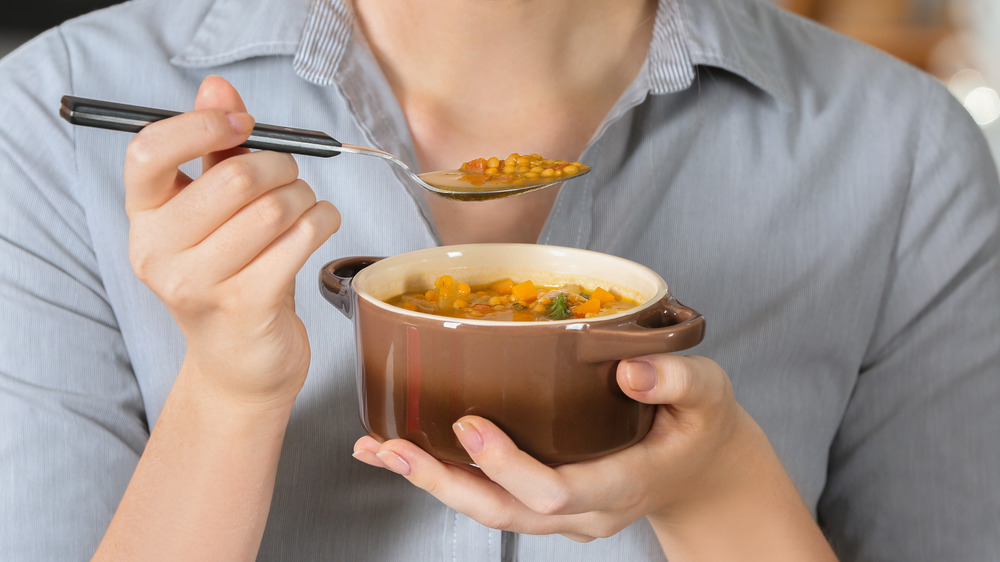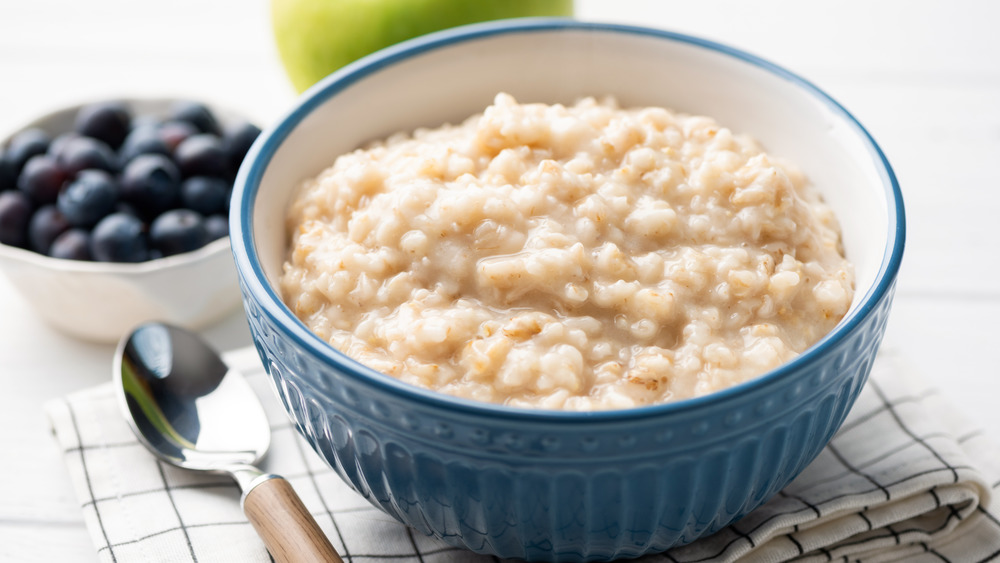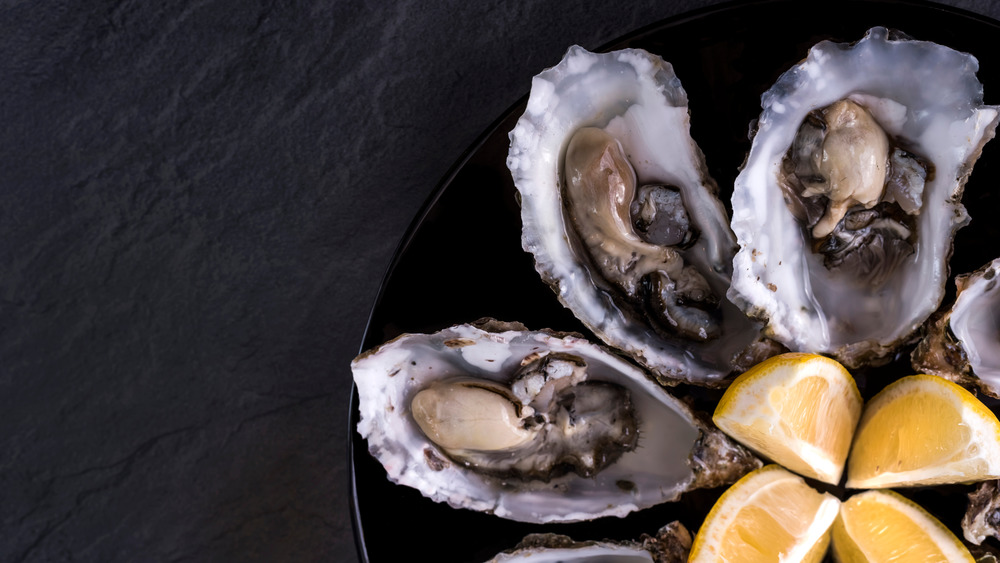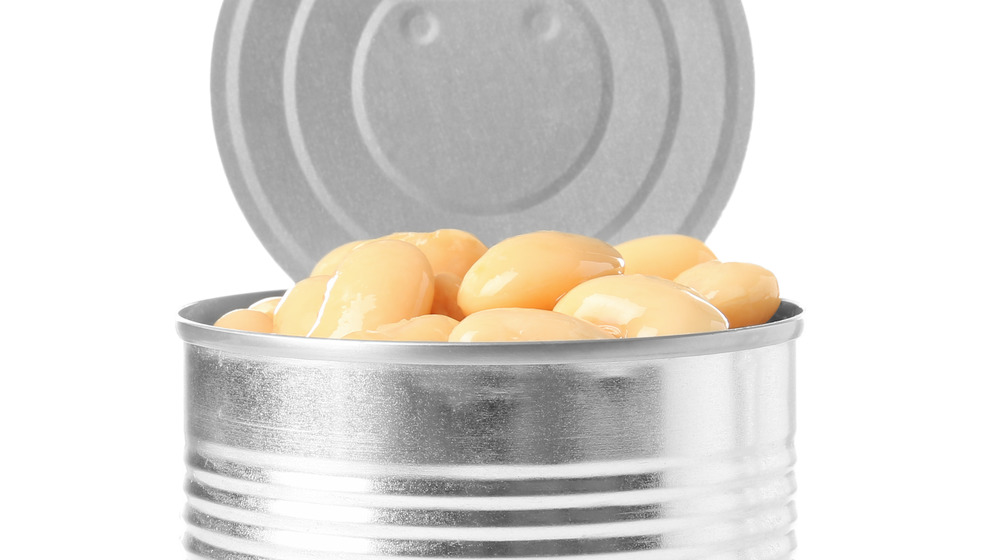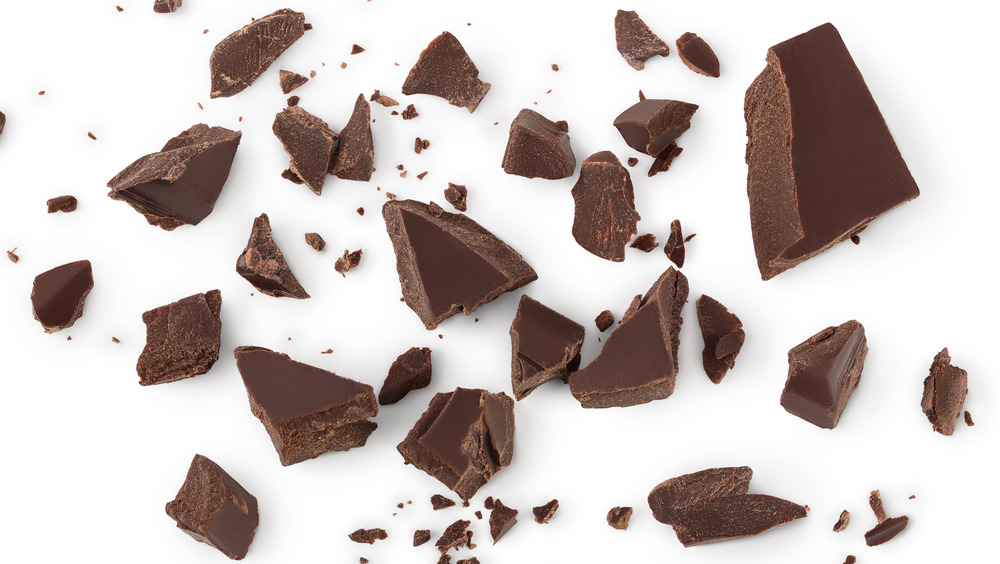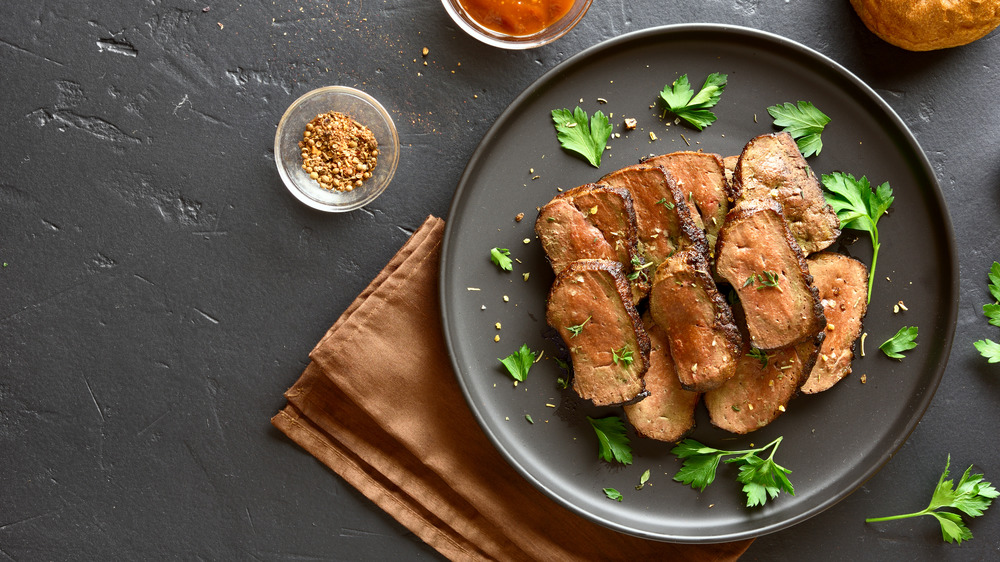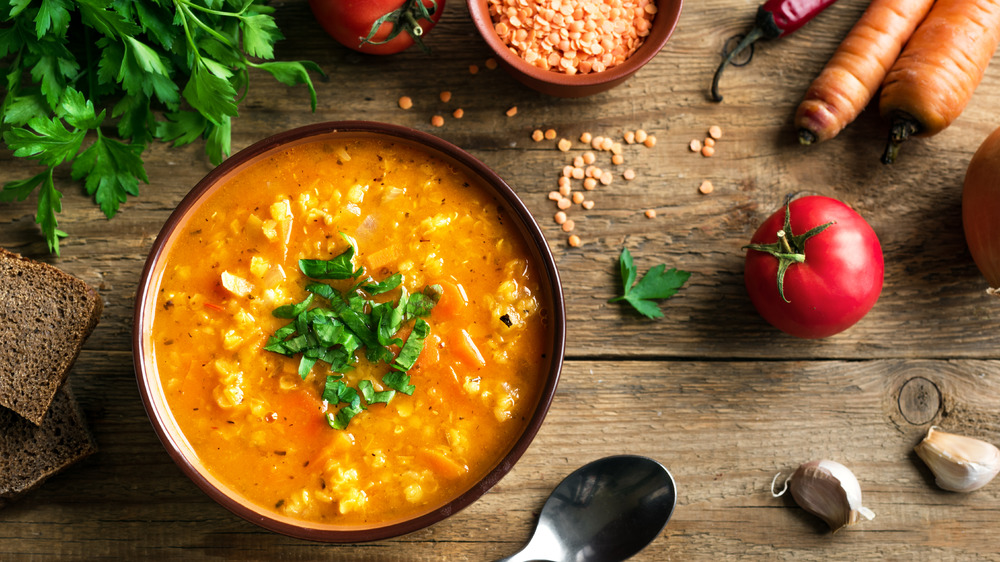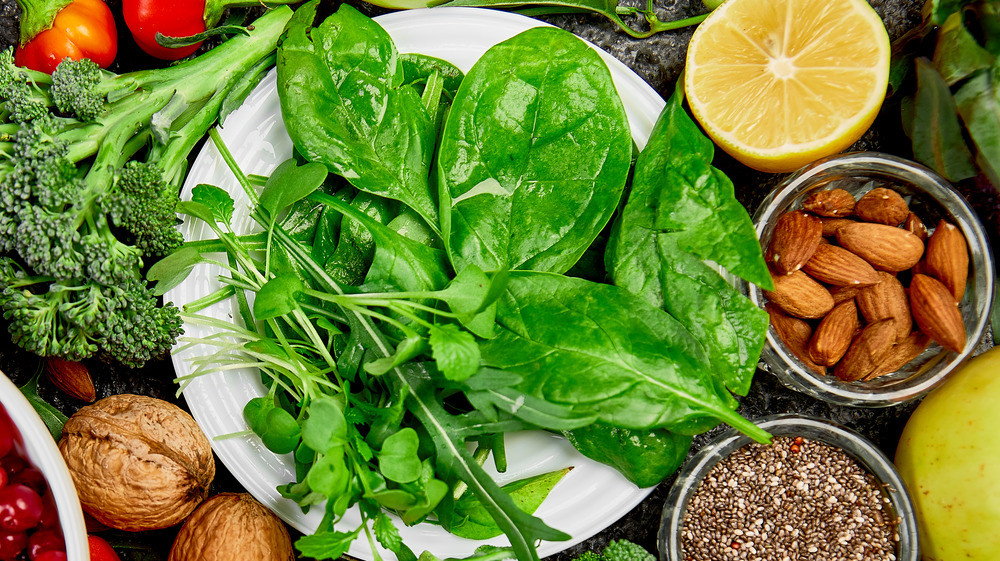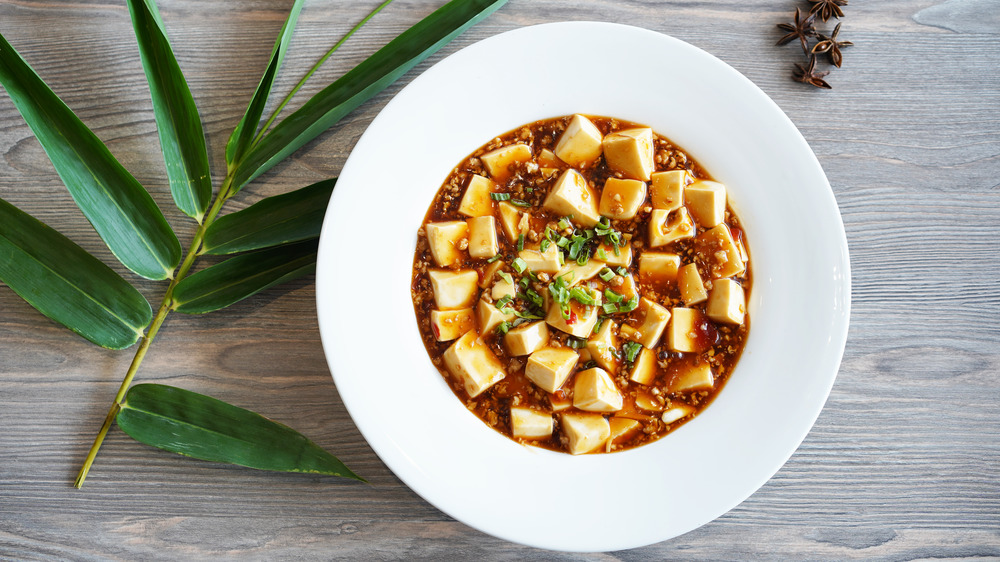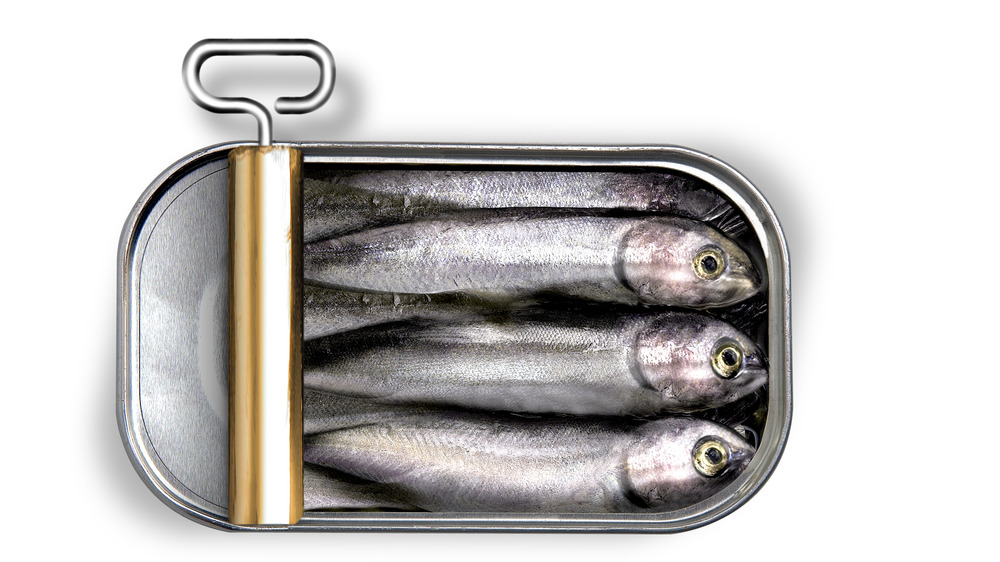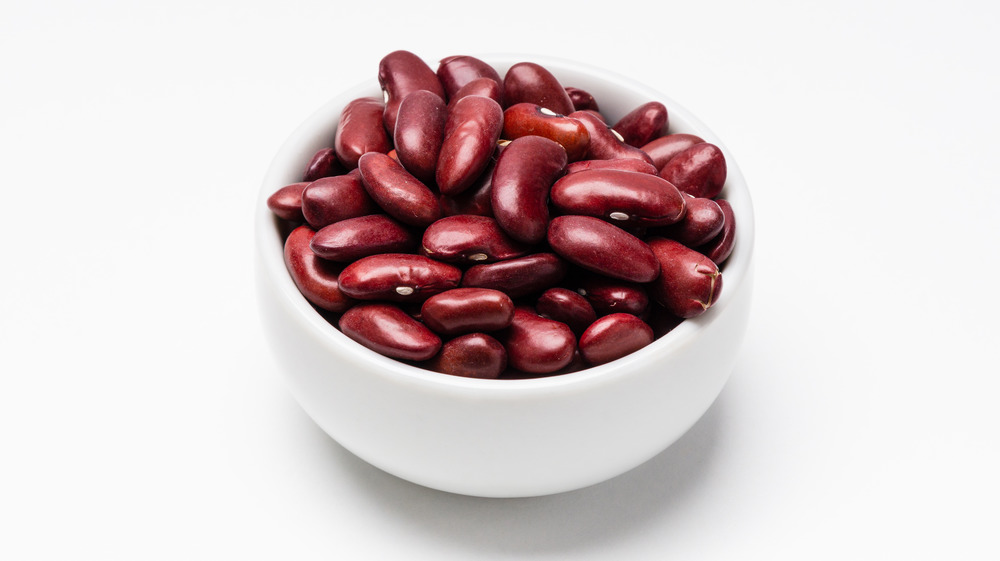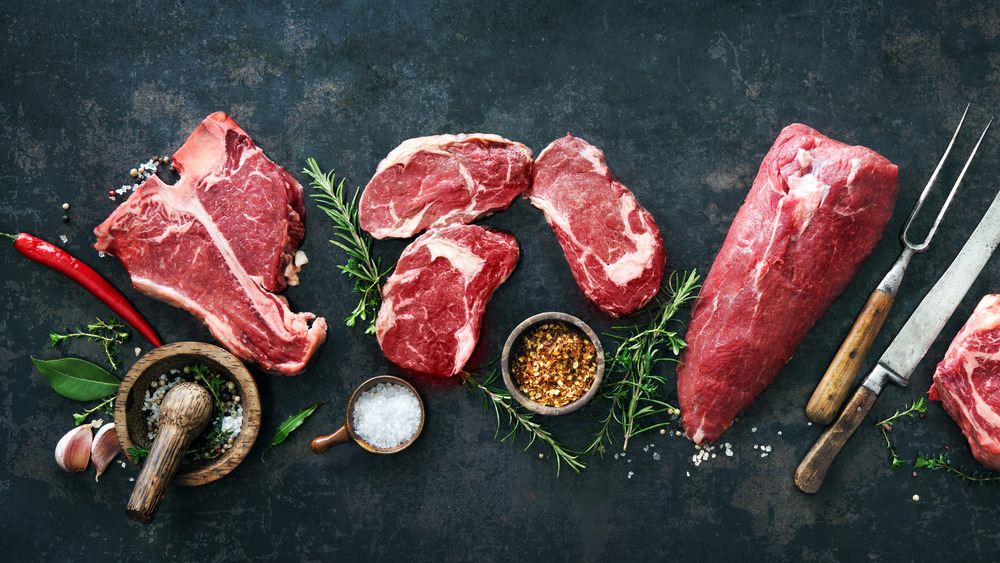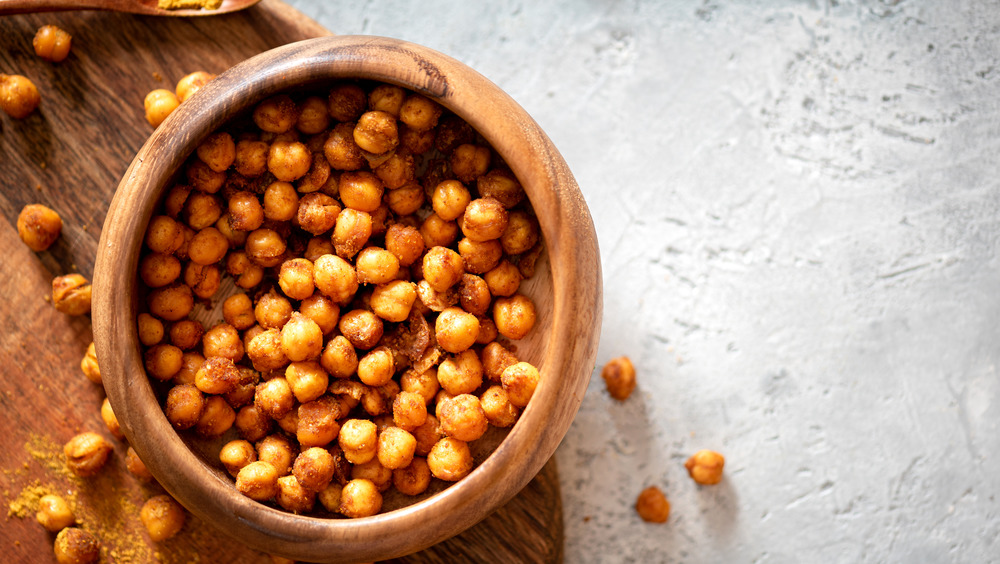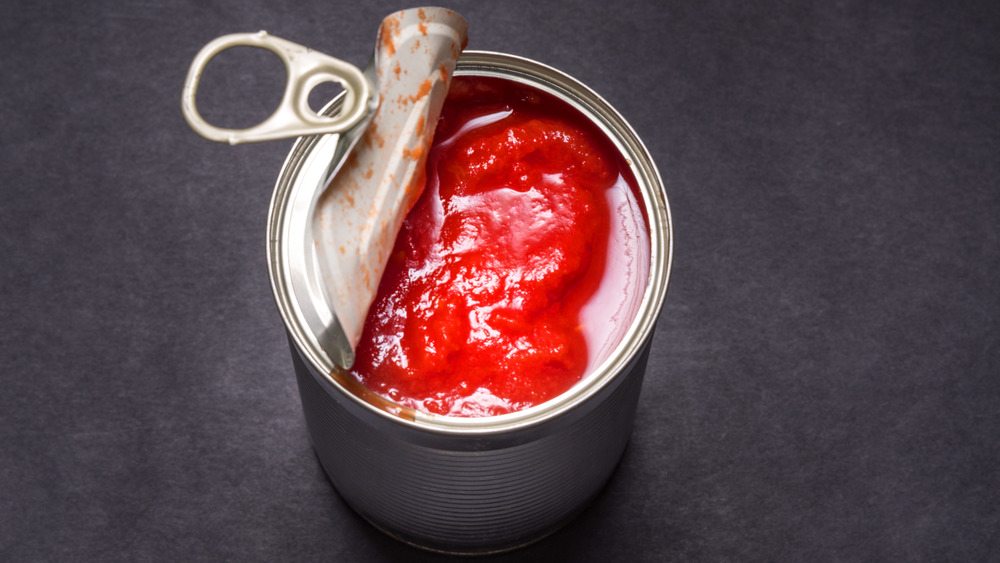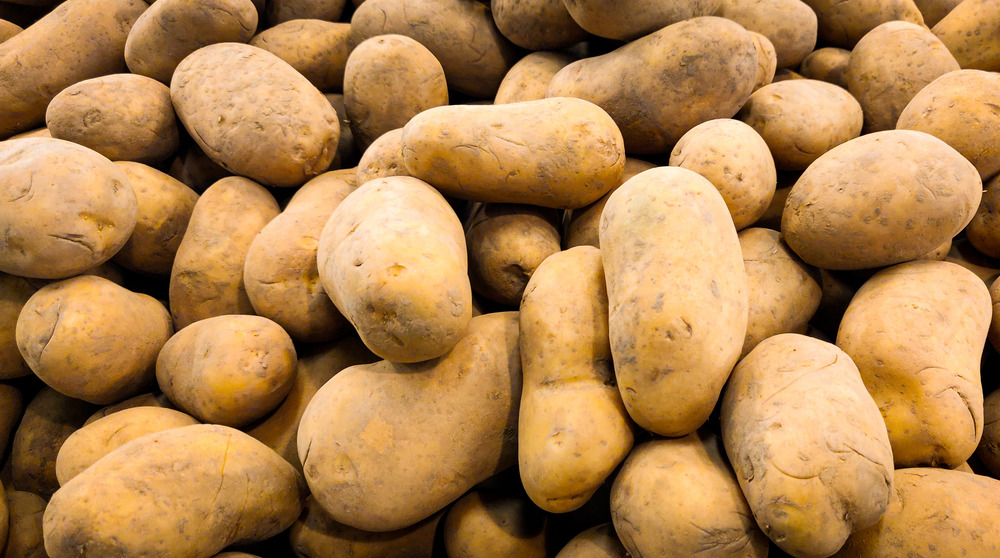If You're Low On Iron, You Should Eat These Foods
Iron is a mineral found in many common foods. It's essential to many important bodily functions — from the production of hemoglobin that transfers oxygen throughout the body to the support of muscle and healthy connective tissue, according to Office of Dietary Supplements at the National Institutes of Health. Nevertheless, iron deficiency is common.
Severe iron deficiency can lead to a condition called iron deficiency anemia, which can reduce energy in adults and impair development in children (via American Family Physician). It's estimated that in the United States, 2 percent of men, 9 to 12 percent of non-hispanic white women, and nearly 20 percent of black and hispanic women have iron deficiency anemia.
Although iron supplementation can help prevent or reverse iron deficiency anemia, high doses of supplemental iron can cause nausea and constipation. Unless advised by your doctor, though, you should try to obtain iron through food sources as opposed to supplements (via Healthline). One important thing to keep in mind is that iron from animal sources is more bioavailable than iron from plant sources — meaning that your body can use a higher percentage of the iron in the food. To get enough, try eating both plant- and animal-based sources of iron.
Fortified oatmeal is full of iron
When you think of foods high in iron, you might immediately think of red meat or seafood. You wouldn't be totally wrong, but the surprising truth is that iron-fortified oatmeal is much richer in iron.
A half-cup of dry fortified quick oats contains 19.8 milligrams of iron, more than 100 percent of the recommended daily intake for both adult men and women (via USDA). For reference, the Office of Dietary Supplements recommends adult men and adult women 51 and older eat at least 8 milligrams per day, and adult women 50 and younger eat 18 milligrams per day.
Starting your day with a bowl of oatmeal has so many benefits beyond just providing all the iron you need in a day. It's also got nearly 4 grams of fiber, which can improve heart health by lowering LDL ("bad") cholesterol levels and reducing your risk of heart attack and stroke, according to the Mayo Clinic. Plus, it's easy to dress oatmeal up with other good-for-you foods, like berries, nuts, seeds, and milk. If you don't have time in the morning to make oatmeal from scratch, consider making overnight oats in the evening and then pulling them out of the fridge for breakfast.
Oysters can up your iron intake
You either love or hate oysters. For those of you that love slurping them for their briny flavor and plump texture, know that there's even more to love. In addition to being a fun happy-hour appetizer, oysters are also extremely high in iron.
Eat six East Coast oysters, and you'll get nearly 6 milligrams of iron — 75 percent of the recommended daily amount for adult men and women over 50, and 33 percent of the recommended daily amount for adult women 50 and under, per the Office of Dietary Supplements' recommendations. In addition, you'll get 8 grams of protein, 26 milligrams of magnesium, and 56 milligrams of zinc.
In other words, oysters are incredibly nutrient dense. If you've never tried them but are curious, find a local raw bar near you and talk to the server or bartender about which oysters they recommend for first-timers. They'll likely advise varieties with a relatively mild flavor to get you started. You can dress them up with a squeeze of lemon juice, a spoonful of mignonette (flavored vinegar), or a dollop or cocktail sauce.
White beans are filled with iron
No, you don't have to cook your chili with beef to make it high in iron. Turns out, a white bean chili might be an even better bet! A cup of canned, rinsed, and drained white beans contains over 4 milligrams of iron, according to the U.S. Department of Agriculture. That one cup also packs a whopping 12.8 grams of fiber, a significant percentage of the recommended daily 25 grams for women and 38 grams for men (via Mayo Clinic).
If you're not sure what to do with your white beans, you might want to start with a simple soup, a chili, or a no-cook white bean salad. Whatever you decide to make with these iron-rich legumes, remember to buy low-sodium canned white beans, and drain and rinse them prior to using to get rid of excess salt and starch. "Draining and rinsing can also remove the metallic flavor sometimes found in canned beans," Better Homes & Gardens advised.
Dark chocolate can add iron to your diet
Dark chocolate is rich and satisfying. It makes a great addition to cookies, cakes, and pies. It's also fantastic on its own as a quick way to satisfy a sweets craving. But, here's yet another reason to eat it: It's high in iron.
A single ounce of dark chocolate contains 2.3 milligrams of iron (via USDA). That's about 29 percent of the recommended daily amount for adult men and women over 50, and nearly 13 percent of the recommended daily amount for adult women 50 and under, according to the Office of Dietary Supplements. Frankly, most of us probably eat more than an at a time, which means we're getting even more iron.
Of course, dark chocolate contains sugar and saturated fat as well, so it's not something that should make up the bulk of your diet, according to Healthline. In fact, it's so rich that you probably wouldn't enjoy eating it all day long, anyway. Instead of relying on dark chocolate as your main source of iron, eat it occasionally and include other high-iron foods from both plant and animal sources in your diet as well. That way, you'll get a balance of all kinds of different nutrients.
Beef liver is a good source of iron
Look, we get it: If you didn't grow up eating beef liver, the idea of cooking and eating it can seem incredibly intimidating. But here's one reason to give the organ meat a shot: a 3-ounce serving of braised beef liver contains 5.5 milligrams of iron (via USDA). That's a significant amount of iron, and accounts for about 69 percent of the recommended daily amount for adult men and women over 50, and 31 percent of the recommended daily amount for adult women 50 and under (via Office of Dietary Supplements). It's also high in protein, and rich in other minerals like zinc, copper, selenium, and niacin that can be hard to get from food.
Still not excited about the prospect of eating beef liver? Commit to trying it at least once before you make up your mind. You can find the stuff at many supermarket butchers, and any specialty butcher will carry it. Braised beef liver and onions is a great place to start.
Boost your iron affordably with lentils
If you don't already know, here's a great budget shopping tip: That bag of dried lentils in the rice and beans aisle of your supermarket is one of the most inexpensive protein sources out there. You can use those lentils in a soup, stew, or curry — or just cook them plain as a salad topper or side dish.
Another reason to love lentils? They're incredibly high in plant-based iron, of course. A cup of cooked lentils contains about 6.6 milligrams of iron, or 83 percent of the recommended daily amount for adult men and women over 50, and 37 percent of the recommended daily amount for adult women 50 and under (via Office of Dietary Supplements). That amount also delivers nearly 18 grams of protein and an impressive 15.6 grams of fiber, both of which support good health and can help keep you full for longer.
If you've had a bag of dried lentils sitting around for months but aren't sure what to do with it, considering making Tadka Dal from Monica's Spice Diary or a basic lentil soup. Both are packed with flavor, and they're easy to store and reheat for lunch or dinner leftovers.
Spinach is packed with iron
We'll be the first to admit that Popeye's obsession with spinach — and the bulging muscles that resulted every time he ate it — may have been a little overblown. However, the sailor was onto something. In addition to being a vitamin-packed leafy green, spinach is an excellent source of plant-based iron.
One cup of cooked spinach contains 6.4 milligrams of iron, or 80 percent of the recommended daily amount for adult men and women over 50, and 36 percent of the recommended daily amount for adult women 50 and under (via Office of Dietary Supplements). Remember, that's for a cup of the cooked green, not the raw stuff. If you've ever cooked spinach, you know that raw spinach leaves shrink a whole lot as you throw them in the pan. Eating raw spinach is a great choice, too, but know that you'll need to eat more volume to get the same amount of iron and other nutrients.
One of the easiest ways to cook spinach is to just brown some garlic in olive oil and then toss in raw spinach leaves, as in this recipe from A Sweet Pea Chef. But really, you can add spinach to almost any savory dish, from pasta to soup to stew.
Tofu adds iron to your diet
Tofu might have the reputation of being a basic vegetarian protein alternative to meat, but there's so much more to it than that. The soy-based protein is a great blank canvas for pretty much any flavor you add to it, and it can take on many different textures depending on whether you stew, pan-fry, or roast it.
As well as all that, tofu is a great source of plant-based iron. A half-cup of firm tofu has 3.35 milligrams of iron, 42 percent of the recommended daily amount for adult men and women over 50, and 19 percent of the recommended daily amount for adult women 50 and under (via USDA, NIH).
Tofu is a great refrigerator staple, even if you're not a vegetarian or vegan. The Pan-Fried Sesame Garlic Tofu recipe from Table for Two turns this protein into a sweet and savory dish with a great texture — making it a good option for people who are relatively new to tofu. For those who are a little more comfortable with the stuff, you can try baking tofu. Tofu prepared in this way makes a nice addition to salads and even works as an easy snack.
Sardines pack a big punch of iron
If the only canned fish you have in your pantry is tuna, it might be time to make a change. Not only are sardines inexpensive, they're also packed with flavor so that a little goes a long way.
As well as being a good source of omega-3 fatty acids, sardines are a good source of iron. One 3.75-ounce can of sardines in oil (drained) provides 2.7 milligrams of iron, 34 percent of the recommended daily amount for adult men and women over 50, and 18 percent of the recommended daily amount for adult women 50 and under (via Office of Dietary Supplements).
Not sure how to eat sardines? The good news is that it can be as easy as layering them on toast. This BBC Good Food recipe for Spanish Sardines on Toast makes a great easy meal, or you could cut it into small pieces and serve it as a fancy-but-easy appetizer. If you'd rather a hot dinner, this Mediterranean Sardine Pasta with Lemon, Capers, and Chili Flakes from Tori Avey is sure to be a crowd pleaser with its varied flavors and textures.
Kidney beans will provide with you with iron
Kidney beans are one of the most popular beans out there. "The common bean is an important food crop and major source of protein throughout the world," Healthline explained. You may be used to throwing them in soups and stews, but these beans are more than just a filler food.
A half-cup of canned, drained, and rinsed kidney beans contains about 1.8 milligrams of iron (via USDA). That same amount will also give you 8 grams of protein and nearly 6 grams of fiber, which will help with digestion and satiety, according to Healthline.
If you're not sure how to add kidney beans to your diet, chili is probably the most obvious choice. Of course, there are other ways to enjoy kidney beans as well. The Afghan Kidney Bean Curry from The Curious Chickpea is an absolute must-try, packed with spices and served over rice. And for lunch, you can't go wrong with a kidney bean salad recipe.
Beef is certainly a source of iron
Beef is a good source of iron, even if it's not the absolute best source out there. A 4-ounce serving of 90 percent lean ground beef contains 2.5 milligrams of iron, 31 percent of the recommended daily amount for adult men and women over 50, and 14 percent of the recommended daily amount for adult women 50 and under (via USDA, NIH).
Keep in mind, this amount of (relatively lean!) beef also contains 4.4 grams of saturated fat. The 2020-2025 Dietary Guidelines for Americans recommends limiting saturated fat to no more than 10 percent of your total calories every day. For someone eating around 2,000 daily calories, that's about 22 grams of saturated fat per day, max. So while red meat like beef can absolutely be part of your diet, it shouldn't be your only source of iron or protein.
If you're looking for a simple way to use beef and up your veggie intake, this "Easy Beef and Broccoli" recipe from Just a Taste calls for cooking beef and veggies in a single pan.
Chickpeas provide a whole lot of iron for their size
You may already be eating more chickpeas than you realize. For starters, they're the main ingredient in hummus. They're also the star of that falafel sandwich you might love ordering for lunch a few times a week. That's great news, because not only are chickpeas a great source of plant-based protein and fiber — they're also high in plant-based iron.
One cup of canned, drained, and rinsed chickpeas contains about 3.7 milligrams of iron, according to the USDA. That's 46 percent of the recommended daily amount for adult men and women over 50, and about 21 percent of the recommended daily amount for adult women 50 and under (via Office of Dietary Supplements). You can also buy a big bag of dried chickpeas and cook them yourself, if you'd rather not stock up on all those cans.
The question is: What should you do with chickpeas once you have them? We've already established that hummus is an option, but roasting is another great idea. Crunchy chickpeas can be eaten as a snack or as a salad topper in lieu of croutons.
Canned tomatoes will add some iron to your pasta
No one's suggesting that you eat spoonfuls of diced or stewed tomatoes straight out of a can. You could, but it probably wouldn't taste great. But because canned tomatoes are such a great source of plant-based iron, it's a good idea to incorporate them into recipes however you can.
One cup of canned stewed tomatoes contains 3.4 milligrams of iron, according to Self, or 43 percent of the recommended daily amount for adult men and women over 50, and 19 percent of the recommended daily amount for adult women 50 and under. That's pretty easy to eat in a pasta sauce.
Speaking of pasta sauce, it's surely the simplest way to cook and eat canned tomatoes. The Marinara Pasta Sauce recipe from The Kitchn should be a staple in your dinner rotation, if it isn't already. You can make a big batch at once and then refrigerate or freeze leftovers for later. That way, all you have to do to make dinner in a pinch is boil some pasta from your pantry and heat up your pre-cooked sauce.
Potatoes will boost your iron intake
Potatoes get a bad rap, but that's not really warranted. Sure, eating fries with every meal isn't advisable, since they're deep-fried in oil and very high in fat. However, potatoes themselves are incredibly nutrient dense.
For starters, one medium baked potato with skin contains 1.9 milligrams of iron, 24 percent of the recommended daily amount for adult men and women over 50, and 11 percent of the recommended daily amount for adult women 50 and under (via Office of Dietary Supplements). It also contains about 926 milligrams of potassium. FYI: That's way more than a banana!
The culinary uses for potatoes are almost endless, and we're willing to bet that you've eaten and enjoyed them several different ways before. Home chefs and professional chefs alike use potatoes in their meals. "One of the reasons I love to use potatoes is because they're so cost-effective," chef and former Melting Pot host Cheryl Smith told Deseret News. "They can be reused. If you bake them today, you can cut up the leftovers and make potato hash or croquettes tomorrow. They're so versatile."

